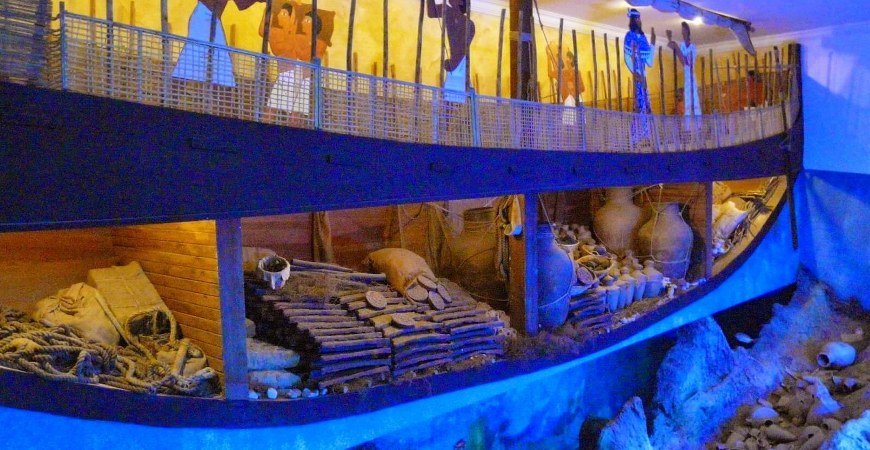The Museum of Bodrum,
Bodrum Museum is housed in Bodrum Castle and was opened to the public in 1964. Bodrum Castle was built in the XV century by the St. Jean Chevaliers who came here from Rhodes, in the name of St. Peter of Navarro. Stones from the famous Mausoleum of old Halicarnassus were used in the construction of the castle and remains of it can still be seen. On the walls of the castle can be seen the coats of arms of the chevaliers, inscriptions, and bas-reliefs of saints. The Castle has four towers known as the Italian, French, German and English towers. During the Ottoman period the castle was used as a prison, and during the First World War, many parts of it were destroyed. Repairs were begun in 1962, and some sections of it made into a museum.
1 — Mycenean room: This room was originally the church of the castle, and contains earthenware vases, dishes, ornaments etc. from the Mycenean civilization (1500-1000 BC). Most of these were found by excavations at Musgebi. Also exhibited here are statues from the Archaic period (VI century BC), a statue of Demeter, Hellenistic period earthen-ware sarcophagi and water jars, and a bas-relief from the Mausoleum depicting Amazons at war.
2 — Underwater finds: This room has three sections. The first contains works dating from the VI century to the I century BC which was found by sponge divers. Among these works, which came from wrecked ships, the most interesting is a bronze bust of a negro child and a bronze statue of the Egyptian god Isis.
The second section contains the findings of underwater exploration carried out by Pennsylvania University on the Phoenicia – Gelidonia costs. Among the finds are objects from a Phoenician ship which is considered to be the world’s oldest wreck. They include bronze tablets which were used as money and agricultural equipment. The third section contains underwater findings from the Yassiada coast near Bodrum. These include objects from a Byzantine ship which is thought to have been wrecked in the first half of the bill century, such as amphoras, a ship’s steelyard, coins, and various ship’s equipment. The pent house of the room contains various jars and anchor stocks made of pierced stone.
3 — Karya room: This room contains works found in the Karya region. They include works from the Bronze, Archaic, Classical and Hellenistic periods, silver coins from Karya, ornaments, and seals. A separate section contains photographs of bas-reliefs from the Mausoleum, engravings and a picture of Herodotus from Halicarnassus.
The castle also contains various styles, inscriptions, canon balls, primitive stone anchors, water jars etc.
The museum has a rich depot, workshops, a library, offices etc.

Leave a Reply